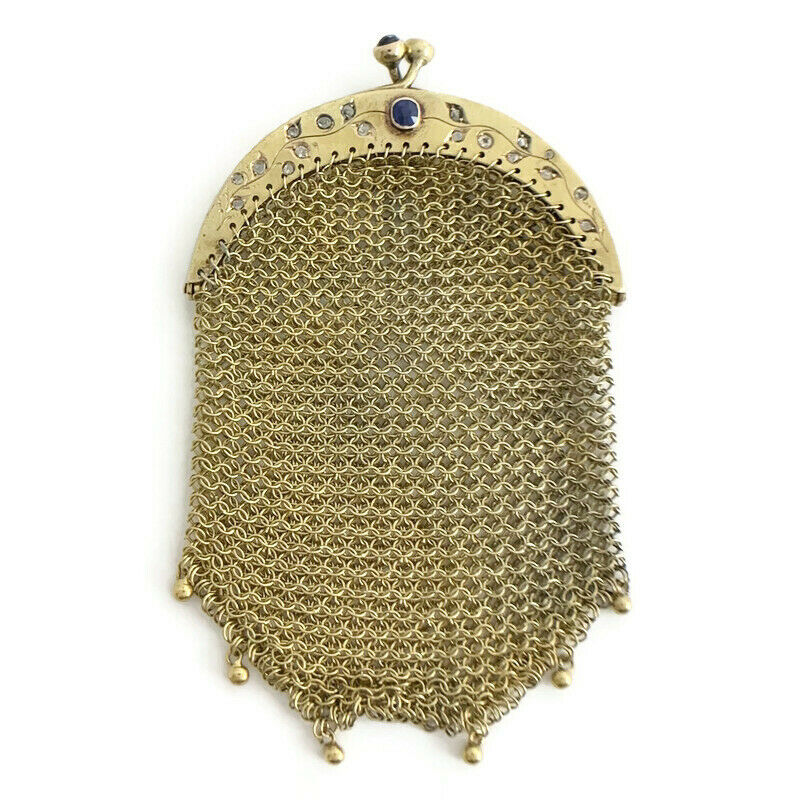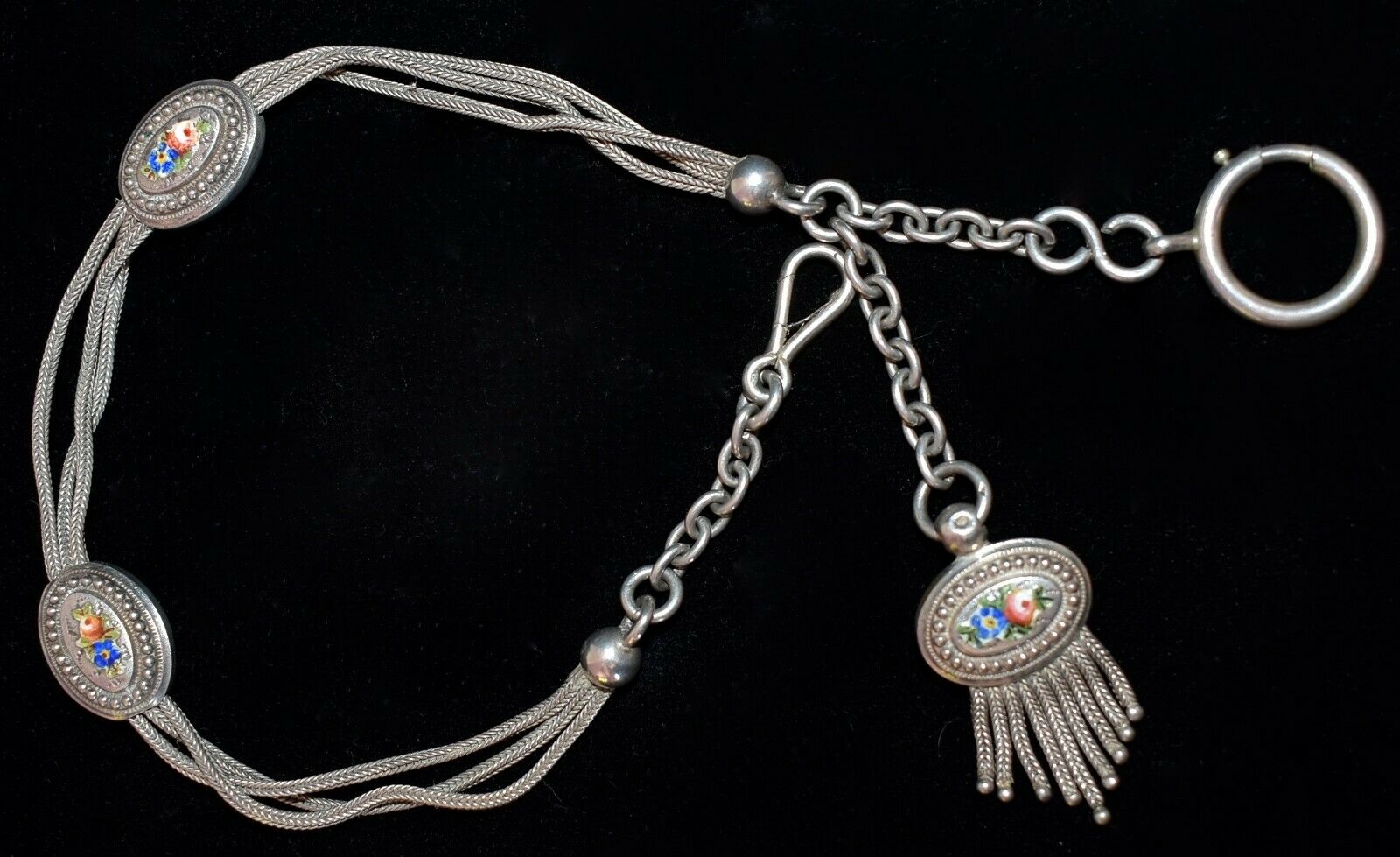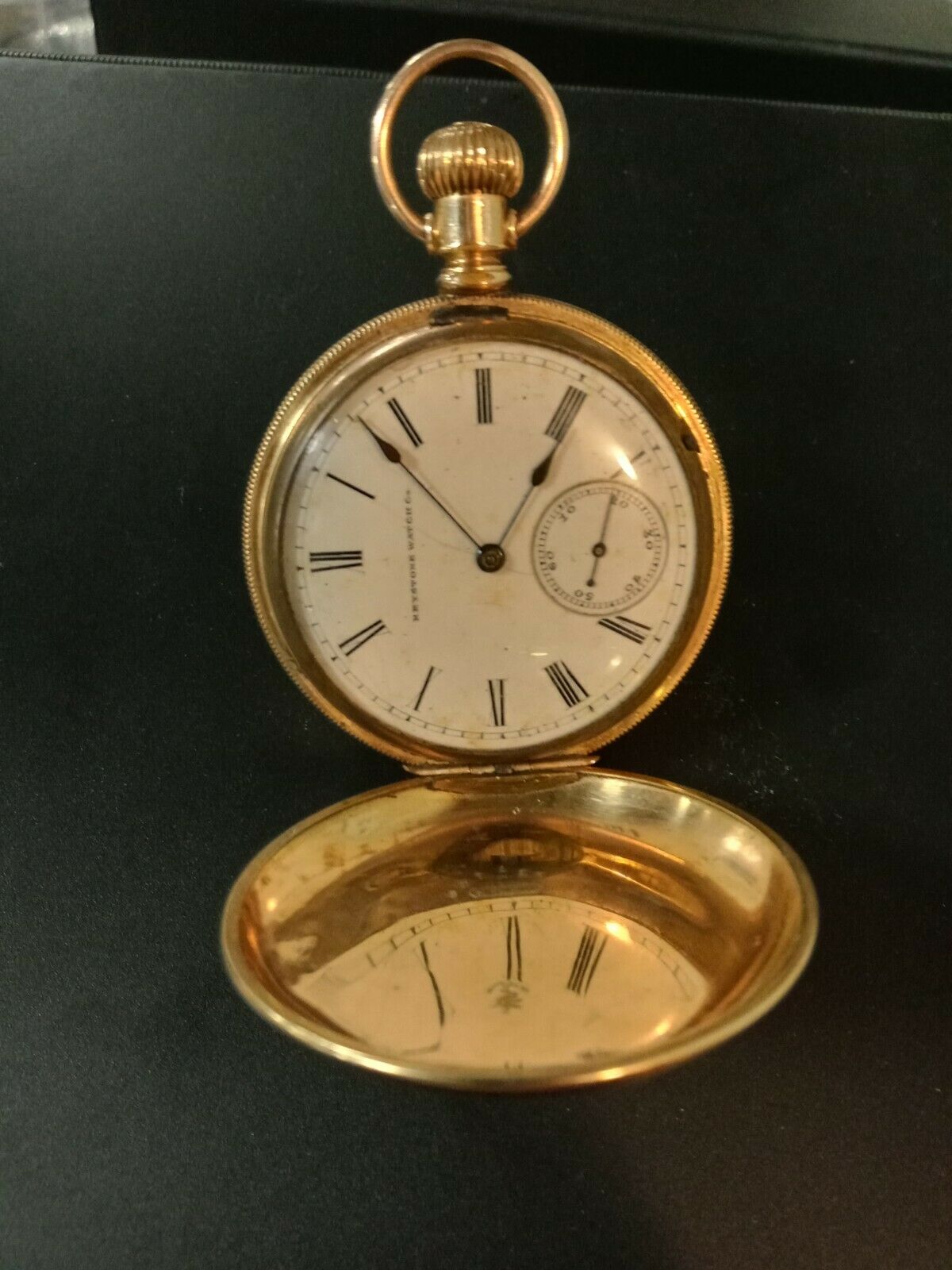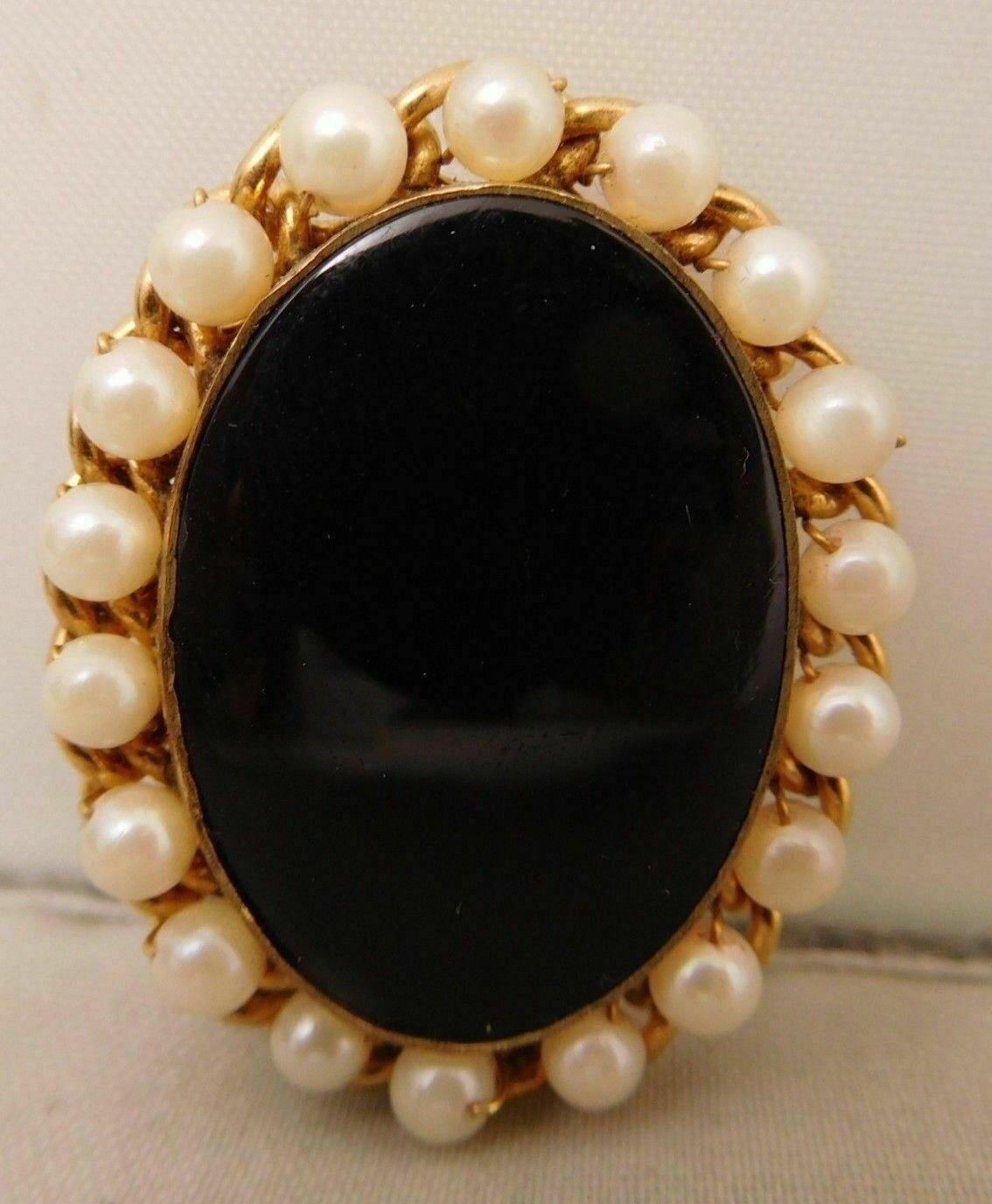-40%
Gold Alexandrite Pendant Antique 19th Century Russian Natural Color-Change 14kt
$ 147.83
- Description
- Size Guide
Description
Antique Genuine Natural Russian Color Change Alexandrite Round Precious Gemstone. Set into High Quality Solid 14kt Yellow Gold “Buttercup” Style Pendant.CLASSIFICATION:
Hand Crafted, Faceted Alexandrite Round.
ORIGIN:
Russia, 19th Century.
SIZE
: Diameter: 2mm. Thickness (Depth): 1 1/2mm. All measurements approximate.
WEIGHT
: Approximately 0.05 carats.
NOTE
: We have many chains available which would fit this pendant. You may request a complimentary gold electroplate chain in lengths from 16 to 24 inches. We also have available chains in 14kt gold fill and 14kt solid gold in lengths from 16 to 30 inches.
NOTE
: This setting is also available in sterling silver (at reduced cost). If you would prefer a different setting style, odds are we have many different setting styles available which would fit this stone(s), some less costly, some more. Write us for pictures and prices.
NOTE
: If you would like only the gemstone, and not the setting, we can dismount the gemstone and offer you the gemstone without the setting. Just let us know, and yes, we’ll discount the price by the cost of the setting.
DETAIL:
Beware! The vast majority of alexandrite offered in the USA is synthetic. The American Gemological Institute estimates that less than 1 in every 100,000 Americans has ever even seen genuine, natural alexandrite. Here is a stunning, brilliant, gorgeous, rare, natural green alexandrite gemstone from the Ural Mountains of Russia. The gemstone was hand crafted and faceted by a 19th century Russian artisan, part of an heritage renown for the production of the elaborate gemstones and jewelry of the Czars of Medieval, Renaissance, and Victorian Russia. Though we're not trying to intimate that the gemstone is absolutely flawless, to the eye at least the gemstone is clean and without discernible blemish. Yes, it is green, when it is so inclined at least.. The color under most lighting conditions is the classic alexandrite green, reminiscent of both peridot and emerald.
However under strong white light, the stone magically transforms itself to a rose color with peach undertones, or a violet-blue, depending upon the intensity and color of the light source. No matter what light source we used to image this gemstone, whether scanner or camera, it turned color. In hand, under most lighting conditions, it is most assuredly green. But the charm of these remarkable gemstones, at least in the higher qualities, is the dramatic color change they are capable of. And true to its reputation, the light of the scanner turned this gemstone a bright rose-peach. And a decent digital camera shows it as violet-purple. Alexandrite is capable of all of these colors, true chameleons, quite extraordinary precious gemstones. The green images on this page were produced using a filter which suppressed the color change so as to produce an image to show you the normal color of the gemstone. But the remaining rose-peach and violet-blue images give more detail and show you what it looks like “fully illuminated”.
This fascinating and sumptuous gemstone was hand crafted and faceted by a 19th century Russian artisan, part of an heritage renown for the production of the elaborate gemstones and jewelry of the Czars of Medieval, Renaissance, and Victorian Russia. The faceted cut is a coarse precursor to what eventually became known in the industry as a “brilliant cut” round, the contemporary finish generally given to round diamonds. It is a gorgeous gemstone, full of fire and sparkle, gorgeous, vibrant, possessing exceptional clarity and color. It is truly a special little gemstone, quite rare. For those who do not know, alexandrite was only produced for about fifteen years during Czarist (Imperial Russia), in the nineteenth century, before the only known mine of any significance played out.
For over a hundred years the sole source of alexandrite was "recycled" Russian jewelry. Russian alexandrite is still considered to be the world's best, though very small deposits of inferior alexandrite has been found outside of the Urals in Russia in recent years. Given the rarity of the gemstone, and the enormous demand, reasonably good specimens are hard to find. Flawless specimens of any significant size have almost resulted in duels between buyers vying for the privilege of being a selected purchaser. While this might not be a flawless gemstone, it is eye clean. The color of this gemstone is quite exquisite, a much sought after green which imparts really rich character and great visual appeal.
We have set the gemstone into contemporary solid 14kt yellow gold “buttercup” style pendant. It is a high quality setting manufactured by one of the USA’s leading semi-custom mount producers. It is constructed of 14kt solid gold (not merely cheap gold electroplate or 5% gold fill). It is not a cheap, gold electroplated pendant setting. It is genuine 14kt solid gold, a quality setting designed to last a lifetime. We can reset into sterling silver if preferred, and there are also many other setting styles available upon request (both in sterling silver, 14kt gold, as well as 14kt gold fill). The default chain is gold electroplated 24 inch (you may also choose a 16, 18, or 20 inch chain if you prefer). However we do have 14kt gold fill and 14kt solid gold chains available in lengths between 16 and 24 inches available upon request.
As might be expected under magnification the gemstone shows the unmistakable, hallmark characteristics of having been hand crafted. The coarseness of the antique, handcrafted finish is considered desirable to most gemstone aficionados, and is not considered a detriment, or detract from the value of a gemstone. These characteristics are not only expected of hand-finished gemstones, many believe that such antique hand-crafted gemstones possess much greater character and appeal than today's mass-produced, laser-cut gemstones. Unlike today’s computer controlled machine produced gemstones that approach flawlessness in a perfect finish, the cut and finish of an antique, handcrafted gemstone such as this is the legacy of an artisan who lived two centuries ago.
Handcrafted though it may be the gemstone possesses superb luster and sparkle, and to the eye is completely transparent, but one cannot say with absolute certainty that it is unconditionally flawless. True, the blemishes it possesses are not visible to the naked eye, and to use trade jargon the gemstone can be characterized as "eye clean". To the eye it is indeed flawless; however were one to examine it in a 10x jeweler’s loupe, it’s almost certain that a few minute blemishes could be detected. Of course much the same may said about almost any natural gemstone, and in particular natural alexandrite. An absolutely flawless gemstone simply is not the rule in nature. Most absolutely flawless gemstones will upon close examination be revealed to be synthetic.
You might also notice under magnification occasional irregularities in the cut and finish. Naturally these characteristics are not only expected of hand-finished gemstones, you must also consider that two centuries ago the mining techniques prevalent did not allow the ultra deep mining operations which are so common today. Keep in mind that two centuries ago mankind was more or less limited to surface deposits or near surface deposits of gemstones. Higher quality gemstones which today are routinely mined from beneath hundreds of meters, even kilometers beneath the earth's surface, were simply inaccessible then.
It is precisely for these reasons antique gemstones must be appreciated as antiques first, gemstones second. The relatively superlative quality of contemporary gemstones routinely mined from deep beneath the earth's surface today were simply not accessible two centuries ago, or at least, only rarely so. However for most, the unique nature and character of these antique gemstones more than makes up for the blemishes found within the gemstones, as well as the cutting irregularities common to handcrafted gemstones, all of which are by and large (if at all) are only visible under magnification.
ALEXANDRITE HISTORY:
Alexandrite is known as a "color change" gemstone. It is emerald green in daylight or under fluorescent lighting, and a purplish red or blue under incandescent lighting, candlelight, or twilight. It belongs to the chrysoberyl family of gems, and one of the most extraordinary types is a cats-eye variety of alexandrite, possessing a remarkably prominent "cat's eye". Most sources credit the discovery of this very unique gemstone to the year 1830 on the birthday of Prince (and ultimately Czar) Alexander II in the Ural Mountains of Russia, near the city of Ekaterinburg. In celebration of Prince Alexander's coming-of-age, this remarkable gemstone was named after him. Alexandrite was popular in Imperial Russia both with the royal family and the wealthy elite, both because of its association with the Czar, and because red and green were the colors of the Russian Empire (and its flag).
However this most rare stone did not bring to Alexander the good fortune it is now generally associated with. Upon ascending to the throne of Russia, Alexander II began long-awaited reforms, including abolishing serfdom, a deed that earned him the name of “The Liberator”. But a terrorist’s bomb ended his life. In memoriam of the monarch who passed away so prematurely, many people in Russia started to wear alexandrite jewelry. It was considered to be the symbol of loyalty to the throne and compassion towards the victims of the revolutionary terror, but at the same time, it said a lot about the owner’s fortune and social position. Even in those times, it was quite difficult to buy an alexandrite ring. According to Leskov, “there were people who made quite an effort to find an alexandrite, and more often, they failed than succeeded.”
Alexandrite is well known to be an extremely scarce and very costly gem. The quality of color change with different illumination is the primary basis for its quality and price. According to the Gemstone Institute of America (“GIA”), no more than one person out of 100,000 has ever seen a natural alexandrite gemstone, although synthetic alexandrite is common and widely available. It is likely that if you read the fine print of 99% of the Alexandrite offered at retail jewelers, you will find it to be "laboratory produced" - synthetic. If there is a huge color change from a very intense green to a very intense red/purple, you can be 99.9% sure that both the color change and the gemstone itself is synthetic. The shift in color of natural gemstones is generally much more subtle. Kind of like the difference in taste between fruit juice and Kool-Aide. One is subtle and natural, the other brassy and synthetic.
However even as an artificially grown stone, alexandrite often commands a retail price of 0.00 to 0.00 per carat. Of course, alexandrite can be found in Russian jewelry of the imperial era, as it was well loved by the Russian master jewelers. Master gemologist George Kunz of Tiffany was a fan of alexandrite, and the company produced many rings featuring fine alexandrite in the late nineteenth and early twentieth century, including some set in platinum from the twenties. Some Victorian jewelry from England featured sets of small alexandrite. However the original source in Russia's Ural Mountains has long since closed after producing for only a few decades, and only a few stones can be found on the Russian market today.
In the past few decades some very small deposits of alexandrite have been discovered in Brazil, Sri Lanka, Zimbabwe, Tanzania, India, and Mozambique. However the Brazilian gemstones tend to have washed out colors when cut, and the African and Celanese sources produce very dark, not brightly colored gemstones. The alexandrite from India tends to be very low quality, with limited color change. The cut alexandrite originating from Russia is usually "harvested" from vintage jewelry. For over a century this source of "recycled" gemstones from Russia was the only source of Alexandrite, and for many years, alexandrite was almost impossible to find because there was so little available. Russian Alexandrite remains elusive. A few specimens are still found from time-to-time in the Ural Mountains of Russia, and are sometimes available as an unset stone, but it is extremely rare in fine qualities.
Stones over 5 carats are almost unknown, though the Smithsonian in Washington D.C., owns a 66 carat specimen, which is believed to be the largest cut alexandrite in existence. The colors within alexandrite are due to trace amounts of the mineral impurities iron, titanium, and chromium (and rarely vanadium is also present). As is the case with emerald, the chromium element both giveth and taketh away. While chromium is responsible both for the green color as well as the color change characteristics of alexandrite, chromium also causes alexandrite (like emerald and ruby) to be characterized by fissures and fractures within the gemstone. Just as emerald is treated under high pressure with oil, in recent years newly-mined alexandrite has oftentimes similarly treated under high pressure with a fluxing agent such as resin, wax, or borax.
The tiny crevasses and fractures are then filled with this material under high pressure, and the treatment is generally very difficult to detect outside of the laboratory. However whereas emerald (and ruby) are routinely treated, alexandrite is only occasionally (and only recently) afforded such treatment. The treatment is a recent development, and was not used on gemstones produced in the nineteenth century. In Russia alexandrite is thought to bring luck, good fortune and love, and also to allow the wearer to foresee danger. It is also believed to encourage romance, and to strengthen intuition, creativity, and imagination. Alexandrite is also believed to be beneficial in the treatment of leukemia. On the metaphysical plane, alexandrite is believed useful in reinforcing one's self esteem and balancing positive and negative energy.
SHIPPING & RETURNS/REFUNDS
: Your purchase will ordinarily be shipped within 48 hours of payment. We package as well as anyone in the business, with lots of protective padding and containers. All of our shipments are fully insured against loss, and our shipping rates include the cost of this coverage (through stamps.com, Shipsaver.com, the USPS, UPS, or Fed-Ex). International tracking is provided free by the USPS for certain countries, other countries are at additional cost.
ADDITIONAL PURCHASES
do receive a
VERY LARGE
discount, typically about per item so as to reward you for the economies of combined shipping/insurance costs. We do offer U.S. Postal Service Priority Mail, Registered Mail, and Express Mail for both international and domestic shipments, as well United Parcel Service (UPS) and Federal Express (Fed-Ex). Please ask for a rate quotation. We will accept whatever payment method you are most comfortable with.
If upon receipt of the item you are disappointed for any reason whatever, I offer a no questions asked 30-day return policy. Send it back, I will give you a complete refund of the purchase price; 1) less our original shipping/insurance costs, 2) less non-refundable PayPal/eBay payment processing fees. Please note that PayPal does NOT refund fees. Even if you “accidentally” purchase something and then cancel the purchase before it is shipped, PayPal will not refund their fees. So all refunds for any reason, without exception, do not include PayPal/eBay payment processing fees (typically between 3% and 5%) and shipping/insurance costs (if any). If you’re unhappy with PayPal and eBay’s “no fee refund” policy, and we are EXTREMELY unhappy, please voice your displeasure by contacting PayPal and/or eBay. We have no ability to influence, modify or waive PayPal or eBay policies.
ABOUT US
: We travel to Russia each year seeking antique gemstones and jewelry from one of the globe’s most prolific gemstone producing and cutting centers, the area between Chelyabinsk and Yekaterinburg, Russia. From all corners of Siberia, as well as from India, Ceylon, Burma and Siam, gemstones have for centuries gone to Yekaterinburg where they have been cut and incorporated into the fabulous jewelry for which the Czars and the royal families of Europe were famous for. My wife grew up and received a university education in the Southern Urals of Russia, just a few hours away from the mountains of Siberia, where alexandrite, diamond, emerald, sapphire, chrysoberyl, topaz, demantoid garnet, and many other rare and precious gemstones are produced. Though perhaps difficult to find in the USA, antique gemstones are commonly unmounted from old, broken settings – the gold reused – the gemstones recut and reset.
Before these gorgeous antique gemstones are recut, we try to acquire the best of them in their original, antique, hand-finished state – most of them centuries old. We believe that the work created by these long-gone master artisans is worth protecting and preserving rather than destroying this heritage of antique gemstones by recutting the original work out of existence. That by preserving their work, in a sense, we are preserving their lives and the legacy they left for modern times. Far better to appreciate their craft than to destroy it with modern cutting. Not everyone agrees – fully 95% or more of the antique gemstones which come into these marketplaces are recut, and the heritage of the past lost. But if you agree with us that the past is worth protecting, and that past lives and the produce of those lives still matters today, consider buying an antique, hand cut, natural gemstone rather than one of the mass-produced machine cut (often synthetic or “lab produced”) gemstones which dominate the market today.
Our interest in the fabulous history of Russian gemstones and the fabulous jewelry of the Czar’s led to further education and contacts in India, Ceylon, and Siam, other ancient centers of gemstone production and finishing. We have a number of “helpers” (family members, friends, and colleagues) in Russia and in India who act as eyes and ears for us year-round, and in reciprocity we donate a portion of our revenues to support educational institutions in Russia and India. Occasionally while in Russia, India, Siam, and Ceylon we will also find such good buys on unique contemporary gemstones and jewelry that we will purchase a few pieces to offer to our customers here in America. These are always offered clearly labeled as contemporary, and not antiques – just to avoid confusion. We can set most any antique gemstone you purchase from us in your choice of styles and metals ranging from rings to pendants to earrings and bracelets; in sterling silver, 14kt solid gold, and 14kt gold fill. When you purchase from us, you can count on quick shipping and careful, secure packaging. We would be happy to provide you with a certificate/guarantee of authenticity for any item you purchase from us. There is a fee for mailing under separate cover. Please see our
"ADDITIONAL TERMS OF SALE."














